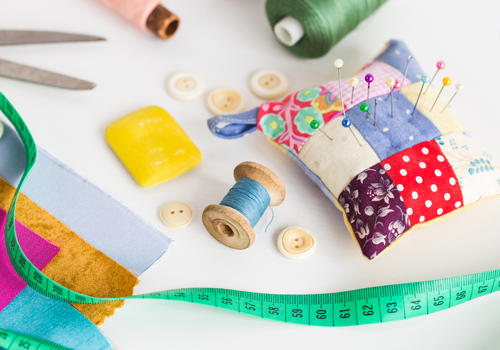Peek Into A Colourful Universe Of Patchwork!

Although it is closely associated with quilting, patchwork is a different needlework technique, with its own distinct and interesting history. Patchwork or 'pierced work' involves sewing together pieces of fabric to form a flat, colourful design.
Though very little is known about patchwork before the 18thcentury, there are few surviving examples. The Quilters' Guild Collection preserves one of the earliest known dated patchworks, the 1718 Silk Patchwork Coverlet. At that time, patchwork was a ladies' leisure pursuit.
There were improvements in technology in textile manufacture using printed cotton fabrics at the end of the 18thcentury, which continued into the early 19thcentury. For those who could afford it, expensive and printed cottons were often pieced together using the mosaic patchwork method, which also required another expensive commodity paper to produce the templates. Simpler and cheaper fabrics were used by the lower classes with simpler designs. By the middle of the century, cottons were losing importance.
The introduction of roller printing had made cottons cheaper to produce and it became widely available. In 1856,Mauveine, the first synthetic dye was produced, followed by a wide range of bright colours, and the fashion shifted from printed cottons to vibrant velvets and silks. They were available as cushions, throws, tea cosies and table covers, adorning the Victorian homes.
The 20thcentury was a period of great fluctuation. The two world wars and a dramatic shift in society led to a scarcity of available materials and decline in traditional skills. Traditional quilts lost its charm owing to competition from commercially manufactured alternatives. However, some people could still see its value, and continued to practise, teach and research patchwork, leading to an eventual resurgence of interest in the 1960s and '70s.
In 1979, The Quilters' Guild was formed with the intention of ensuring the traditional crafts of patchwork were passed on to the next generation.
It was adopted by the fashion industry in the 1960s as a 'look' associated with the hippie culture, not just a technique. By the end of the century, patchwork was closely associated with women.
At present, patchwork clothing is quite fashionable in most countries of the world.
Hope you liked reading about this colourful work of art!